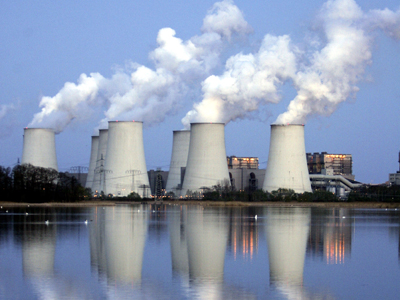Vietnam Presses Ahead With Ambitious Nuclear Plans

Vietnam is pressing ahead with Southeast Asia’s most ambitious civilian nuclear energy program despite safety fears over the technology following the 2011 Fukushima disaster. Foreign companies and governments are competing to get a toehold in an industry that could be worth $50 billion by 2030, according to estimates by U.S. officials.
Those plans received a boost last week with the announcement that the United States and Vietnam had signed an agreement allowing U.S. firms to develop civilian nuclear power here. Once President Barack Obama and top U.S. energy officials sign the so-called “123 agreement,” Congress will have 90 days to either challenge it or let it take effect.
Facing an energy crunch after years of underinvestment and artificially low consumer electricity prices, Vietnam is planning to build seven nuclear plants in the coming years.
“Vietnam has the second-largest market, after China, for nuclear power in East Asia, and our companies can now compete,” U.S. Secretary of State John Kerry said last week after inking the agreement in Brunei with Vietnam’s Prime Minister, Nguyen Tan Dung.
But in a sign of potential difficulties to come, the planned construction start date for the first two plants has been delayed by three years, from 2014 to 2017, said Vuong Huu Tan, head of Vietnam’s Radiation and Nuclear Safety Agency, in a recent interview.
Japan’s nuclear disaster also overhangs the plans. All of the country’s nuclear plants are shuttered as it grapples with the aftermath of the March 2011 tsunami that caused a triple meltdown at the coastal Fukushima Dai-ichi nuclear plant.
A 2011 study by three scientists from Italian research institutions said historical precedent suggests Vietnam’s coastline is potentially vulnerable to earthquake-generated tsunamis originating farther east in the South China Sea. Their simulation map suggests Ninh Thuan — the central province where the first reactor is slated to be built — and a few nearby provinces are among the most vulnerable to wave impact.
But Tan, the Hanoi-based nuclear official, said safety is a high priority and Vietnam’s plants will be built to international standards. “We need to have nuclear power plants to ensure the supply of energy for our country,” he said. “Other energy sources are not sufficient.”
One possible reason Vietnam has not wavered from its plans to build coastal nuclear plants is that it can proceed without worrying much about public opinion. The ruling communist party controls the domestic media and bans any critical discussion about government activities.
This contrasts with Malaysia, Indonesia and the Philippines, where plans for civilian nuclear plants have met protests, said Kevin Punzalan, a researcher at De La Salle-College of St. Benilde in the Philippines who has surveyed plans for nuclear energy development across Southeast Asia.
Vietnam badly needs to develop new power sources because its domestic coal and hydropower production is leveling off. The country is set to be a net energy importer by 2015. The Asian Development Bank has said domestic electricity demand may rise by up to 14 percent per year until 2015 and plateau at 11 percent until 2020, fueled by a rising middle class that demands air conditioning and other energy-intensive creature comforts.
Vietnam’s 2011 power-grid master plan called for vast increases in energy production through 2030, but analysts say the government struggles to attract venture capital for new power plants partly because it keeps power prices below market rates, reducing incentives for potential investors.
And the electricity sector is dominated by an inefficient, debt-ridden state-owned electrical company and its subsidiaries — a clunky system that discourages competition.
Nuclear power, however, remains front and center on Vietnam’s energy agenda.
Vuong Huu Tan said Vietnamese university graduates are now training in Russia and Japan to become nuclear technicians. And the International Atomic Energy Agency said in January that Vietnam’s plan to build two plants amid salt flats on Vietnam’s central coast were in “active preparation.”
Although no plants are under construction, Russian and Japanese investors are in the lead, with one project each, according to Tan. An office in the science and technology ministry is papered with topographical maps — some in Russian or Japanese — of the proposed Ninh Thuan province sites.
South Korean and American firms are nipping at their competitors’ heels.
In May, the U.S. Embassy in Hanoi hosted a delegation of American energy company executives, and invited senior Vietnamese officials to a plush hotel ballroom for a conference and networking session.
Under Secretary of Commerce for International Trade Francisco Sanchez told the guests the U.S. has the world’s largest fleet of civilian nuclear power plants. “American businesses have obviously played a big role in that growth, and they are ready to do the same thing here,” he said.
The new 123 agreement would require Vietnam to buy nuclear fuel on the international market, rather than enrich its own uranium.






